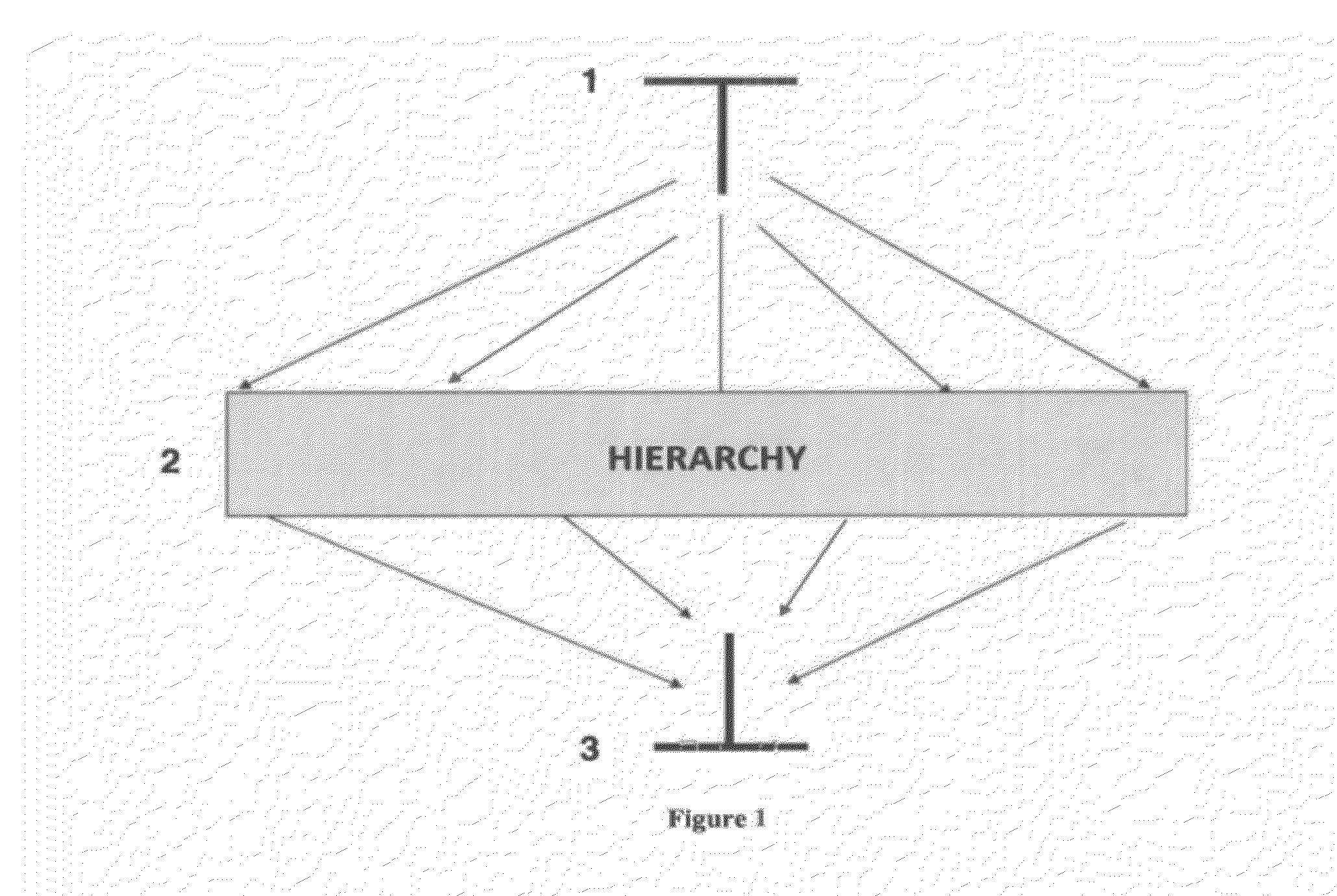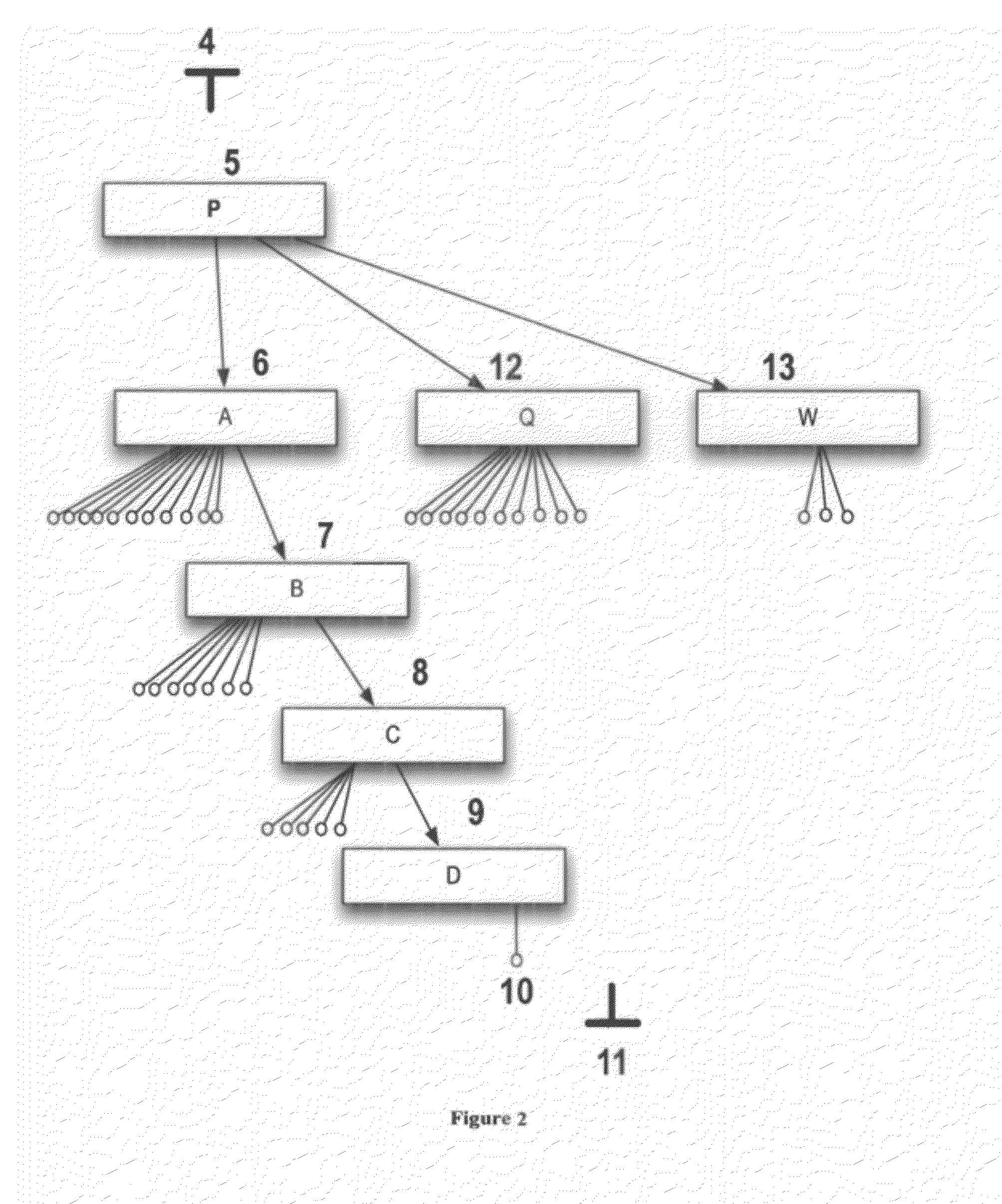Relativistic concept measuring system for data clustering
- Summary
- Abstract
- Description
- Claims
- Application Information
AI Technical Summary
Benefits of technology
Problems solved by technology
Method used
Image
Examples
case 1
oncepts or expressions are equal when; all defining semantics and content are equivalent. For example, Vehicle Broken is equivalent to Engine Broken:
Vehicle Broken
[0148]HasLocation Engine
[0149]HasSite Spark-Plug
And
Engine Broken
[0150]HasLocation Engine
[0151]HasSite Spark-Plug
case 2
o concepts, i and j, differ in their definitions by some features or attributes and the Z-Equation defines their similarity:
Z(i,j)=1-∑i,j=1Nai,j(1-(Ncsi,jc(m)+1)Nc+1)+∑i=1Nbi,j(1-(Ncsi,j(m)+1)Nc+1)-∑i=1Ndi,j(1-(Ncsi,jc(nm)+1)Nc+1)
The Feature Measure (Fm) between given concepts, C1 and C2 with their AVPs, is defined using the Z-Equation as:
Fm(C1,C2)=1 / Z
When the components of the Z-Equation (e.g. Nc=0) are zero, then the value of Fm is 1, meaning that the concept itself is its own feature.
Where:
[0152]Ncsi,jc(m)=The number of concepts that have matching AVPs with concepts i and j (e.g. HasLocation Engine is a feature that matches two concepts Vehicle Broken and Engine Broken)
Nc=The total number of defined concepts
Ncsi,j(m)=The number of concepts that have AVPs with matching relations but different values to concepts i and j (e.g. HasLocation Engine with HasLocation Car).
Ncsi,j(nm)=The number of AVPs that did not match between the two concepts i and j.
[0153]For example, Table 1 could b...
PUM
 Login to View More
Login to View More Abstract
Description
Claims
Application Information
 Login to View More
Login to View More - R&D
- Intellectual Property
- Life Sciences
- Materials
- Tech Scout
- Unparalleled Data Quality
- Higher Quality Content
- 60% Fewer Hallucinations
Browse by: Latest US Patents, China's latest patents, Technical Efficacy Thesaurus, Application Domain, Technology Topic, Popular Technical Reports.
© 2025 PatSnap. All rights reserved.Legal|Privacy policy|Modern Slavery Act Transparency Statement|Sitemap|About US| Contact US: help@patsnap.com



